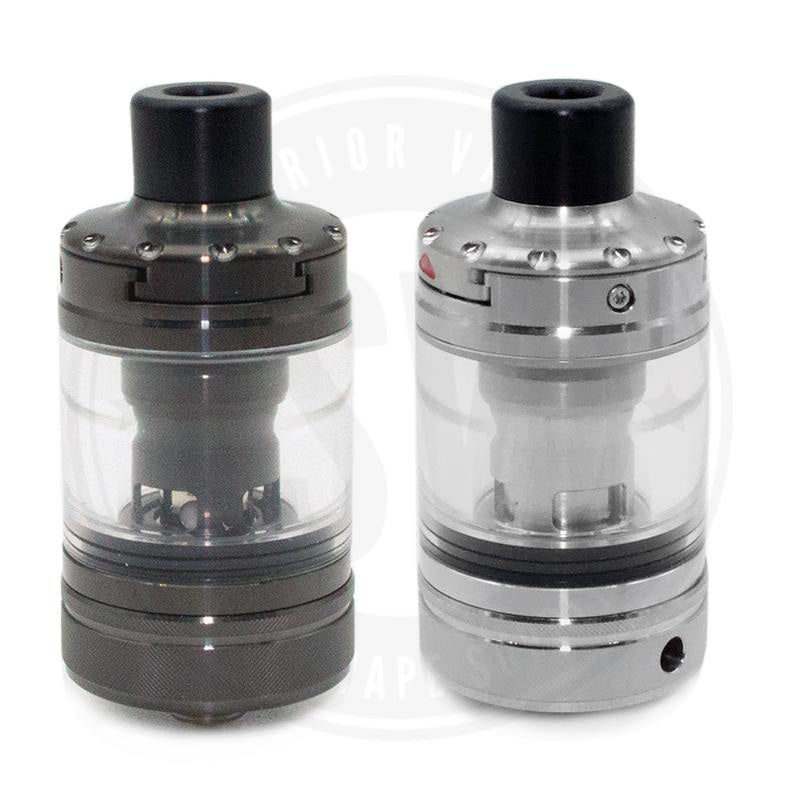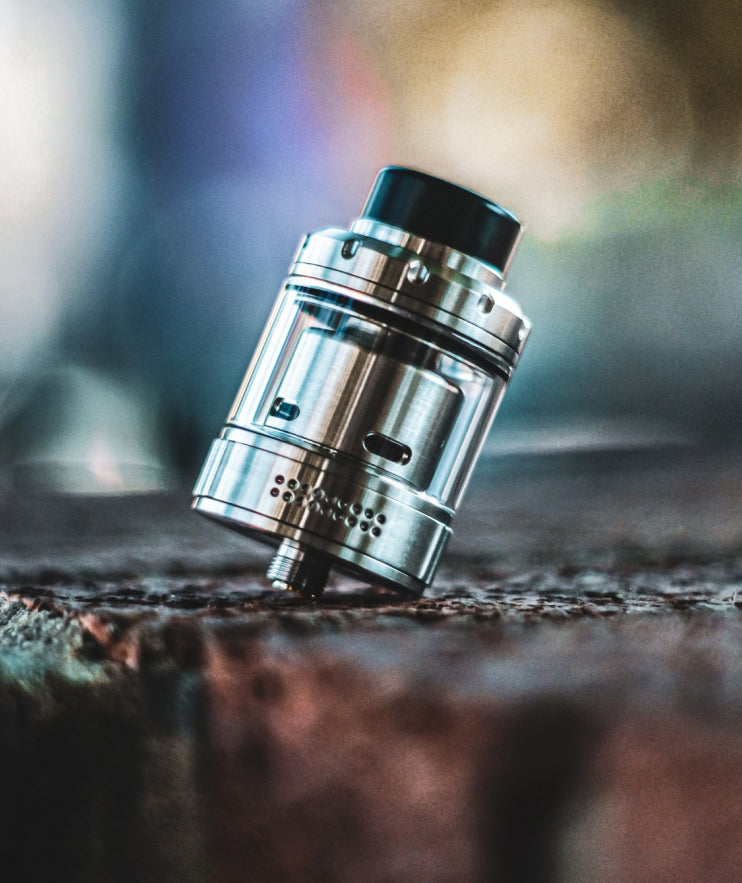Nicotine, E-Juice and You
Nicotine is a word that is synonymous with smoking and all the serious health related risks that it entails. Whilst it there is no debate that it is the ingredient in cigarettes that causes addiction, it is by no means the most damaging ingredient (tar and formaldehyde are both produced through the combustion of tobacco and are far more harmful).
Regulations due to come into force in November 2016 has meant UK distributors will be limited to 20mg of nicotine per milliliter (previously this could be as high as 36mg). Many manufacturers will advertise their e-juice as low, medium or high strength but the actual nicotine level this equates to will obviously vary. The following tends to act as a rough guide though:
No Nicotine E-Juice
Some e-liquids contain no nicotine whatsoever. Many vapers who have weaned themselves off nicotine entirely don’t want to give up vaping and this is the perfect option for them.
Low Nicotine Level E-Juice
Low doses of nicotine are usually between 6-8mg. This is often the last stage in the process of quitting nicotine altogether.
Medium Nicotine Level E-Juice
Medium levels can vary but are generally between 10-14mg. This is a common level for ex-smokers who used to smoke light cigarettes.
High Nicotine Level E-Juice
High levels of nicotine could be anything from 16-18mg. This will tend to suit people who have just quit smoking or former heavy smokers who have turned to vaping.
Very High Nicotine Level E-Juice
The highest level of nicotine available in the UK will be capped to 20mg by the regulations that come into effect in November 2016. Generally speaking though, e-liquids with 20mg of nicotine or more could be considered very high.
The nicotine concentration you opt for in your e-juice will largely depend on when you quit smoking and how much you used to smoke. Heavy smokers for example will probably want a higher level of nicotine when vaping to give them a comparable hit to real cigarettes (dubbed ‘analog’ cigarettes by the vaping community). After a period of time though it becomes easier to switch down to lower nicotine concentrations.
Vaping and Quitting
People quit smoking cigarettes in different ways and at different paces. Whilst some people are able to quit overnight, for many it’s a much more challenging process. Nicotine patches have been used for many years as a method of quitting and in some ways vaping isn’t that different.
The main difference with vaping is that, because it imitates the act of smoking, it provides ex smokers with the mental stimulus as well as the nicotine fix associated with cigarettes. This may sound trivial to non smokers but it can often be a crucial aspect of quitting, as smoking is psychologically addictive as well as physically addictive. Many ex smokers will admit that they miss the physical ritual of lighting, holding and dragging on a cigarette, as much as the actual nicotine hit itself. Vaping provides this, whilst offering a far less damaging means of consuming nicotine.After making the transition from analog to electronic cigarettes, the ex smoker can then gradually start reducing their nicotine intake by switching to e-juices with lower levels.
It’s important however to get the nicotine dosage right from the outset. If you are a heavy smoker then transitioning to a low level nicotine e-juice may not be providing you with the nicotine hit (or throat hit) your used to and you could quickly compensate by smoking again. Conversely, a light smoker transitioning to vaping with a high nicotine level e-juice may actually be taking on more nicotine than they’re used to. Both these scenarios can end up with the ex smoker giving up on vaping and going back to cigarettes. It’s important therefore to find the nicotine level that’s right for you.
What the Science Says
It would be an understatement to say that vaping has caused controversy since it’s popularity has exploded. The word ‘vaping’ itself is a relatively new word to enter the English lexicon but has already become incredibly divisive, with the power to evoke both ebullient enthusiasm and scathing criticism in equal measure. Whilst we at Superior Vapour do not deny which side of the fence we sit on in this debate (we are in the vaping business after all) we do believe in the need for a frank, open and honest conversation about vaping in the UK. We also believe that this conversation should focus on the facts and the scientific research, instead of knee jerk reactions and prejudice.
Before we start talking about vaping, let’s just put it in context and talk briefly about smoking. In the UK alone, there are 9 million adult smokers and around 100,000 of them die every year as a result of smoking. Despite numbers falling, smoking is still the single greatest cause of premature deaths in the UK. Smoking related illnesses costs the NHS approximately £2bn per year, although public health body Action on Smoking and Health (ASH) puts the the total cost to society (including employers and the environment) as a staggering £13.9bn per year.
There are around 2.8 million adult vapers in the UK according to ASH, with only 9% using e-liquids with more than 19mg of nicotine. Perceptions of harm caused by vaping has grown to an all time high with just 15% of those surveyed believing electronic cigarettes are less harmful than smoking.
Let’s now take a look at some of the science and research concerning vaping.
Vapour vs Smoke
One of the most common misconceptions around about smoking is that it’s the nicotine in cigarettes that do most the damage. Although nicotine is the addictive substance in tobacco, it’s certainly not the most harmful to your health. The damage from tobacco comes down to the nature in which it is consumed. The act of burning tobacco releases thousands of dangerous chemicals, many carcinogens and also tar. It is these substances that are linked to the diseases and illnesses associated with smoking like heart disease and lung cancer. Many of these chemicals have still to be identified. Electronic cigarettes on the other hand create a vapour by heating a liquid. Because we know what’s in the e-liquid (see previous chapter) we know what’s in the vapour.
Research and Studies into Vaping
There are numerous studies into the health effects of vaping but the evidence is pretty unequivocal: vaping is far safer and less harmful to humans than smoking cigarettes. In fact a 2015 review by Public Health England and published on the UK Government website states that e-cigarettes are 95% less harmful than smoking, based on current evidence. If you’re a regular smoker then that’s a pretty stark statistic. To put it a far blunter way, smoking will likely kill you, whereas vaping will not. As if the PHE report wasn’t enough, a subsequent report from the Royal College of Physicians found that e-cigarettes were ‘likely to be beneficial to UK public health’ and ‘smokers should be reassured and encouraged to use them.’
There have been countless other studies into the health effects of vaping, as well as the efficacy of vaping as a cessation method. Despite the continuing negative press vaping seems to attract, the body of scientific research suggests that vaping is far safer than smoking and the risks associated with it are negligible when compared to the harm from inhaling tobacco smoke. More to the point, many studies conclude that, far from a risk to society, vaping has the potential to save many lives and should be actively promoted. US vaping company Vapex has put together this excellent archive of just some of the international research undertaken.
Diacetyl and Popcorn Lung
There has been a lot of media attention of late around the notion that vaping can cause a pretty horrific lung condition called bronchiolitis obliterans (or popcorn lung as it’s commonly known). This is caused by a chemical called diacetyl which is found in e-liquids. There are two very important considerations to this however, that much mainstream media reporting has largely ignored.
The first is that there is far more diacetyl in cigarette smoke than e-cigarette vapour. In fact most research suggests cigarette smoke is between 1200 and 2000 times more toxic than e-cigarette vapour and contains far more diacetyl. In other words, you’re far more likely to develop popcorn lung from smoking than you are from vaping.
The second important aspect that much reporting has failed to acknowledge is that many e-liquids do not contain diacetyl at all. In fact if you stick with the most reputable e-juice manufacturers, then there’s no reason to come into contact with diacetyl at all.




















